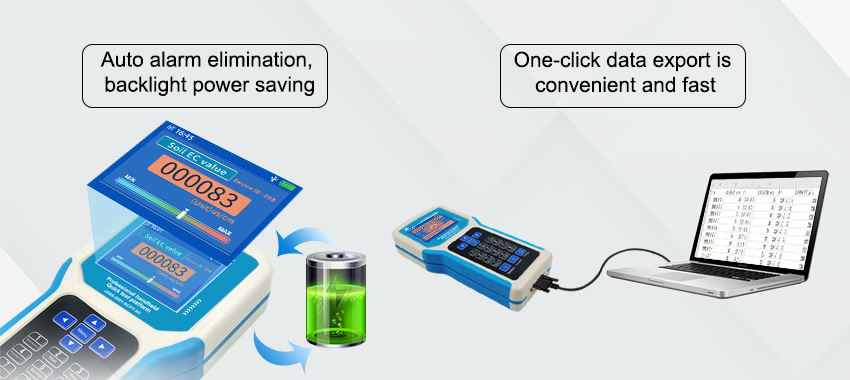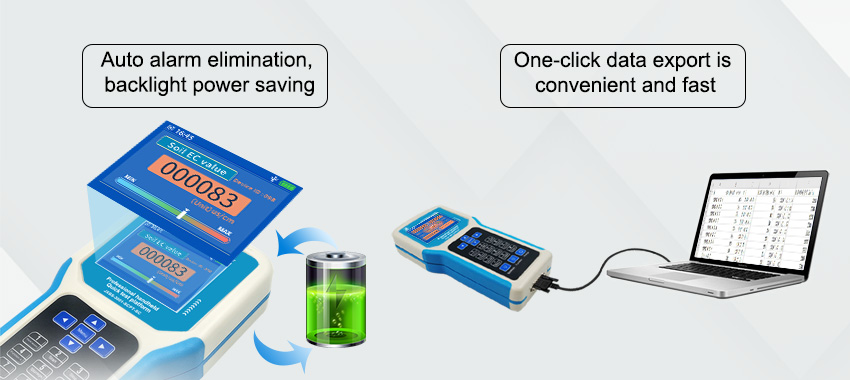Irrigation and fertilization are two critical factors in agricultural practices that can greatly affect crop yield and quality. Traditional methods of irrigation and fertilization often rely on predetermined schedules or visual assessments, which may lead to inefficiencies and waste of resources. However, with the advent of soil sensors, farmers now have access to real-time data on soil conditions, enabling them to optimize their irrigation and fertilization practices. In this article, we will discuss how soil sensors are revolutionizing agriculture by providing accurate information for precise and efficient irrigation and fertilization management.
Understanding Soil Sensors:
Soil sensors are electronic devices equipped with various probes and sensors, designed to measure and monitor different parameters in the soil. These parameters include soil moisture, temperature, nutrient levels, pH balance, and salinity. Soil sensors can be either wired or wireless, with wireless sensors offering the advantage of easy installation and remote monitoring. By collecting and analyzing real-time data, soil sensors provide farmers with valuable insights into soil health and help optimize irrigation and fertilization practices.

Precision Irrigation Management:
Water is a scarce resource in many agricultural regions, and efficient water management is essential for sustainable farming. Soil sensors play a crucial role in optimizing irrigation practices by providing accurate data on soil moisture levels. Traditional methods of irrigation often rely on general assumptions or visual assessment, which can result in either under-irrigation or over-irrigation. Under-irrigation can lead to reduced crop yields, while over-irrigation can result in water wastage and leaching of nutrients. Soil sensors allow farmers to monitor soil moisture at different depths and determine the optimal time and amount of water required for irrigation. This data-driven approach ensures that crops receive the right amount of water when they need it, promoting healthy growth and maximizing water efficiency.
Enhanced Fertilization Strategies:
Proper fertilization is crucial for providing plants with the necessary nutrients for optimal growth and development. Soil sensors enable farmers to assess nutrient levels in the soil, helping them make informed decisions about fertilizer application. By monitoring nutrient content, farmers can determine the precise amount and type of fertilizers required, avoiding both inadequate and excessive fertilization. Inadequate fertilization can lead to nutrient deficiencies, stunted growth, and reduced yields, while excessive fertilization can result in nutrient runoff and environmental pollution. Soil sensors provide real-time data on nutrient levels, allowing farmers to tailor their fertilization strategies to meet the specific needs of each crop and field.
Site-Specific Management:
Every field has its unique characteristics and requirements, and a one-size-fits-all approach to irrigation and fertilization may not be optimal. Soil sensors enable site-specific management by providing detailed information on soil conditions at various locations within a field. Farmers can divide their fields into zones based on soil characteristics and install soil sensors in each zone. By monitoring soil moisture and nutrient levels in different zones, farmers can customize irrigation and fertilization practices based on the specific needs of each zone. This targeted approach optimizes resource allocation, minimizes waste, and ensures that crops receive individualized care for maximum productivity.
Data-Driven Decision-Making:
The data collected from soil sensors is invaluable for making informed decisions regarding irrigation and fertilization practices. By analyzing historical data, farmers can detect patterns and trends in soil conditions and adjust their irrigation and fertilization strategies accordingly. For example, if a particular zone consistently shows high soil moisture levels, farmers can reduce irrigation frequency or duration in that zone to avoid waterlogging and root diseases. Similarly, if nutrient levels are consistently low in a specific zone, farmers can apply additional fertilizers to address the deficiency. Data-driven decision-making based on soil sensor data enhances precision and efficiency in irrigation and fertilization management.
Integration with Automation and Remote Monitoring:
Soil sensors can be integrated with automation systems and remote monitoring technologies to further optimize irrigation and fertilization practices. Automated irrigation systems can be programmed to activate based on soil moisture data collected by the sensors. This eliminates the need for manual intervention, ensures timely irrigation, and reduces water wastage. Remote monitoring allows farmers to access real-time data on their mobile devices or computers, enabling them to make quick decisions and adjustments even when they're not physically present on the farm. Integration with automation and remote monitoring technologies increases the efficiency and convenience of irrigation and fertilization management.
Future Prospects:
The potential of soil sensors in optimizing irrigation and fertilization practices is immense, and ongoing advancements in sensor technology continue to improve their capabilities. Researchers are developing more accurate, durable, and cost-effective soil sensors, making them more accessible to small-scale farmers. Integration of soil sensors with other technologies such as weather forecasting, drone imaging, and artificial intelligence holds great promise for precision agriculture. These innovations will enable farmers to make data-driven decisions on a larger scale, implement predictive analytics for resource management, and enhance overall farming efficiency.
Conclusion:
Soil sensors are revolutionizing agriculture by providing real-time and accurate data on soil conditions. By optimizing irrigation and fertilization practices based on this data, farmers can maximize crop yields, reduce resource wastage, and promote sustainable farming practices. Precision irrigation management and enhanced fertilization strategies help conserve water, minimize nutrient losses, and protect the environment. With the integration of automation and remote monitoring, farmers can streamline their operations and make timely decisions, even from a distance. As technology continues to advance, soil sensors will play a crucial role in enabling farmers to optimize their irrigation and fertilization practices, ensuring food security and a sustainable future.






